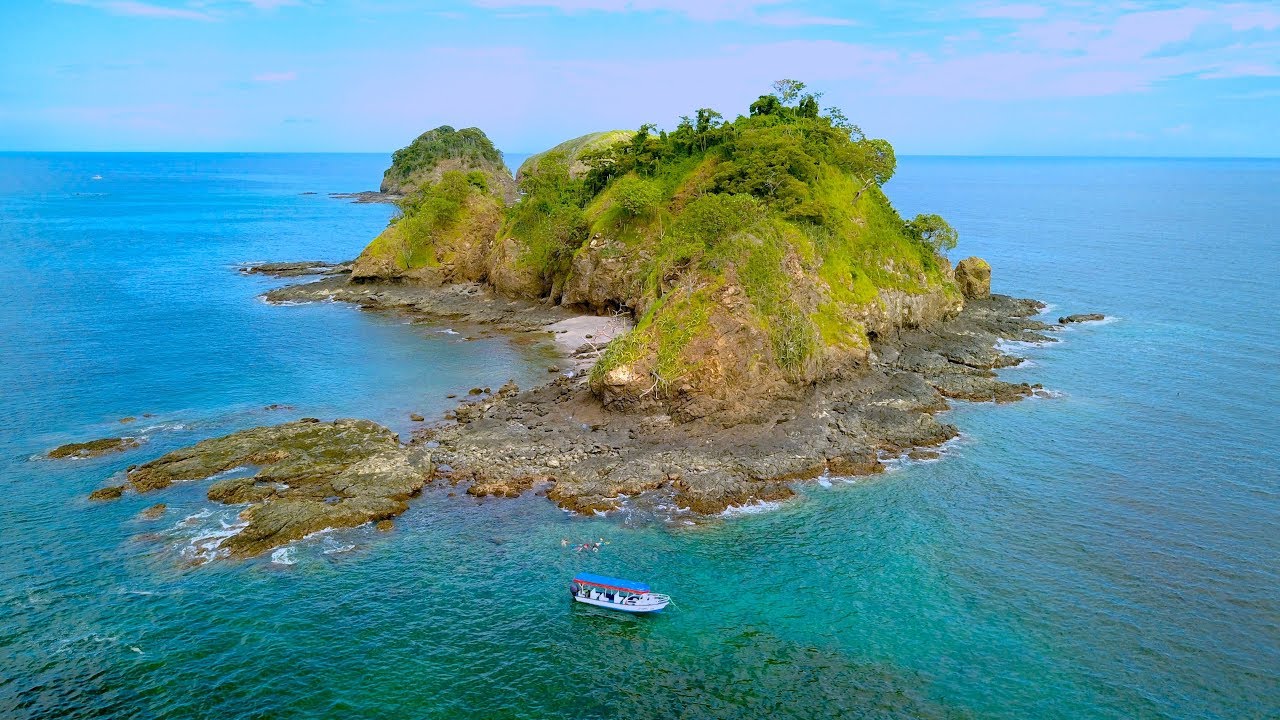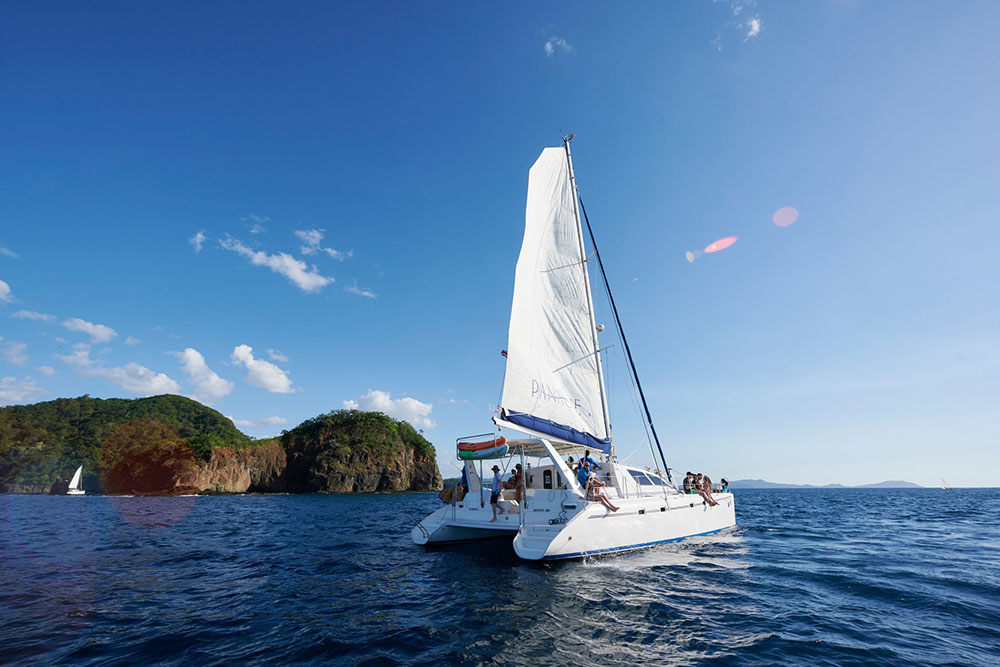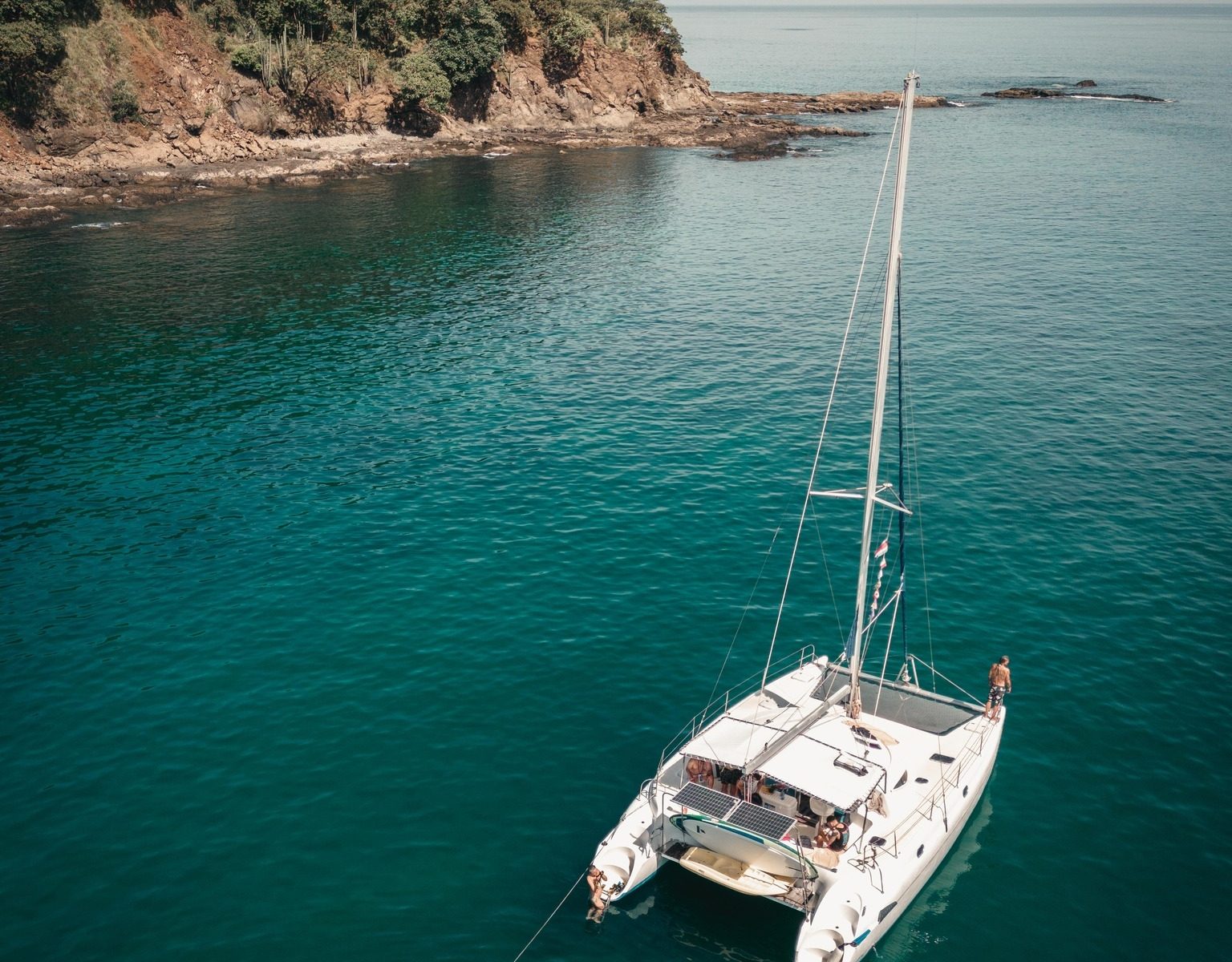Sailing in Guanacaste in February
Information about weather and sailing conditions in February
February is a great month to sailing, because like January and March and April, it is part of the dry season months in Guanacaste, which makes the chances of rainfall very low.

Additionally, with the blue sky and sea, as well as the absence of rain, visibility is better, which makes for better snorkelling.
Besides, there are strong enough winds for the catamaran to move quite fast through the waters of Guanacaste.
Guanacaste geography and scenery
The province of Guanacaste is located in the northwestern part of the country, on the Pacific coast. It is the second largest province of Costa Rica in terms of surface area. Its terrain is flat, rugged by the Guanacaste mountain range towards the border with Alajuela, with elevations between 500 and 2026 m a.s.l., and with some high areas in the Nicoya Peninsula. Towards the center of the province is located in the Tempisque river valley, being the Guanacaste mountain range its northeastern limit, the Tilarán mountain range the southeastern one and the Nicoya mountains the southwestern one.

The Guanacaste mountain range separates the plains of the northwestern Pacific slope of the country from the northern plains. It extends in a northwest-southeast direction and is composed of volcanic strata of recent geological origin. It is the watershed of the northeastern part of the country. Four volcanic peaks stand out in the topography of the mountain range, from northwest to southeast: Orosí volcano (1,487 m above sea level), Rincón de la Vieja volcano (1,895 m above sea level), Miravalles volcano (2,028 m above sea level) and Tenorio volcano (1,916 m above sea level). The Nicoya mountain ranges run parallel to the Pacific coast and the Gulf of Nicoya, on the Nicoya Peninsula, and are of low altitude and peaks.
The dry month is ideal for a Costa Rica trip
The month of February is pretty much in the middle of the dry season and therefore usually offers sunny hot climate and little rain.
Due to the cold weather in the northern hemisphere, especially many visitors from North America and Europe like to use February as a travel time. The occupancy rate of hotels is so good, especially in February, that bookings must be made in good time, otherwise there may be bottlenecks in accommodations and tours.
Temperatures in February
The weather in February is a bit sunnier than in January.
The “alicios” (cold winds) subside and the heat increases considerably, especially in the coastal areas.
It is a very warm, dry month, along with March and April, February is one of the driest months of the year in Costa Rica. The North Pacific region is equally dry in February. Rainfalls are rare and when they do, they last only a few minutes.
Daytime temperatures vary between 35°C and 38°C.
In the Central Pacific, the temperature remains almost constant averaging 35°C. The South Pacific region is also hot in February, but the climate is more humid than the Central and North Pacific regions of Costa Rica.
On the Caribbean coast, temperatures in February are 26°C, and rainfall decreases, compared to January, the month with the most rainfall.
In the central valley and northern region, February offers ideal weather for touring, hiking and other activities.
Daytime temperatures range between 25 and 28°C, with evening temperatures dropping to a maximum of 5- 10°C.
Rainfall is usually limited to the night hours, during the day light rain alternates with bright sunshine.


